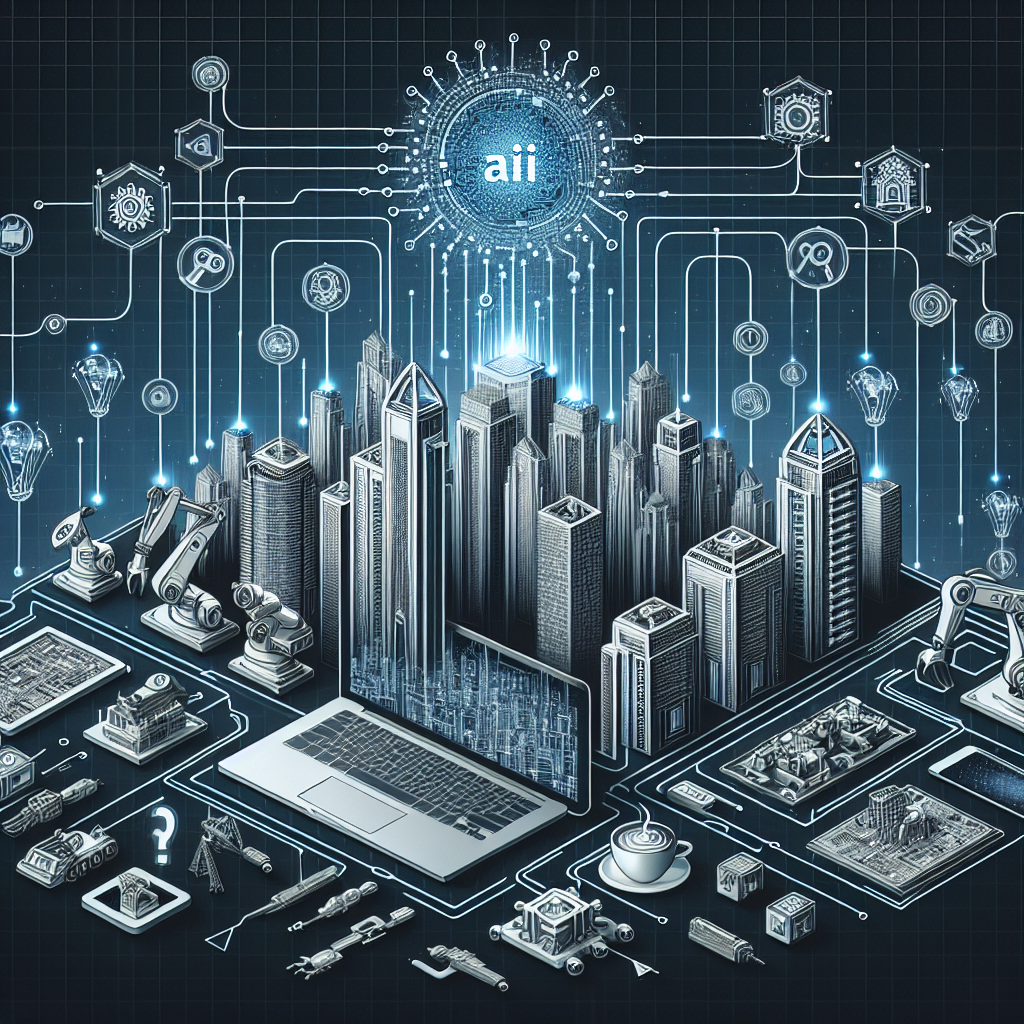In recent years, artificial intelligence (AI) has been making significant strides in various industries, including architecture and construction. AI-driven tools are revolutionizing the way buildings are designed, fabricated, and constructed, leading to faster, more efficient, and more sustainable processes. In this article, we will explore the impact of AI in architectural fabrication and construction, and how these tools are changing the game for architects, engineers, and builders.
AI-driven tools for architectural fabrication and construction encompass a wide range of technologies, including machine learning, robotic automation, and generative design. These tools are capable of analyzing vast amounts of data, predicting outcomes, and performing complex tasks with a level of precision and efficiency that was previously unimaginable. From designing complex structures to optimizing construction processes, AI is transforming every stage of the architectural and construction workflow.
One of the key areas where AI is making a significant impact is in generative design. Generative design uses algorithms to explore thousands of design options and generate optimal solutions based on a set of parameters and constraints. This approach allows architects and designers to quickly explore a wide range of design possibilities, leading to more innovative and efficient solutions. By leveraging AI-driven generative design tools, architects can create structures that are not only visually stunning but also structurally sound and cost-effective.
AI-driven tools are also playing a crucial role in robotic fabrication. Robots equipped with AI algorithms can perform a variety of tasks, such as cutting, bending, welding, and assembling building components with a level of precision and speed that is unmatched by human labor. Robotic fabrication not only reduces construction time and costs but also improves the safety and quality of the built environment. By integrating AI-driven robotic fabrication into the construction process, builders can streamline production, minimize waste, and deliver projects on time and on budget.
Another area where AI is making a significant impact is in construction management. AI-driven project management tools can analyze project schedules, budgets, and resources to identify potential risks and opportunities, allowing project managers to make informed decisions and take proactive measures to mitigate risks and optimize project outcomes. By leveraging AI-driven construction management tools, builders can improve project efficiency, reduce costs, and deliver projects with higher quality and performance.
In addition to generative design, robotic fabrication, and construction management, AI-driven tools are also being used in other areas of architectural fabrication and construction, such as material selection, energy optimization, and sustainability assessment. AI algorithms can analyze building materials and their properties to recommend the most suitable materials for a specific project, taking into account factors such as durability, cost, and environmental impact. AI-driven tools can also optimize building energy performance by simulating different energy-saving strategies and recommending the most effective solutions to reduce energy consumption and greenhouse gas emissions. Furthermore, AI algorithms can assess the sustainability of a building design by analyzing its environmental footprint and recommending ways to reduce its impact on the environment.
Overall, AI-driven tools for architectural fabrication and construction are revolutionizing the way buildings are designed, fabricated, and constructed. By leveraging AI algorithms and technologies, architects, engineers, and builders can create more innovative, efficient, and sustainable structures that meet the needs of the present and future generations. As AI continues to evolve and improve, we can expect to see even greater advancements in architectural fabrication and construction, leading to a more sustainable and resilient built environment.
FAQs:
Q: How is AI impacting architectural fabrication and construction?
A: AI is revolutionizing architectural fabrication and construction by enabling architects, engineers, and builders to design, fabricate, and construct buildings with a level of precision, efficiency, and sustainability that was previously impossible. AI-driven tools such as generative design, robotic fabrication, and construction management are transforming every stage of the architectural and construction workflow, leading to faster, more cost-effective, and more sustainable projects.
Q: What are some examples of AI-driven tools for architectural fabrication and construction?
A: Some examples of AI-driven tools for architectural fabrication and construction include generative design software that explores thousands of design options to generate optimal solutions, robotic fabrication systems that automate tasks such as cutting, bending, welding, and assembling building components, and construction management tools that analyze project schedules, budgets, and resources to optimize project outcomes.
Q: How can AI-driven tools improve the sustainability of buildings?
A: AI-driven tools can improve the sustainability of buildings by analyzing building materials and energy performance to recommend the most environmentally friendly and energy-efficient solutions. By optimizing material selection, energy usage, and sustainability assessments, AI-driven tools can help architects and builders reduce the environmental impact of buildings and create more sustainable structures.
Q: What are the benefits of using AI-driven tools in architectural fabrication and construction?
A: The benefits of using AI-driven tools in architectural fabrication and construction include faster project delivery, reduced costs, improved quality and performance, increased safety, and enhanced sustainability. By leveraging AI algorithms and technologies, architects, engineers, and builders can create more innovative, efficient, and sustainable structures that meet the needs of the present and future generations.

